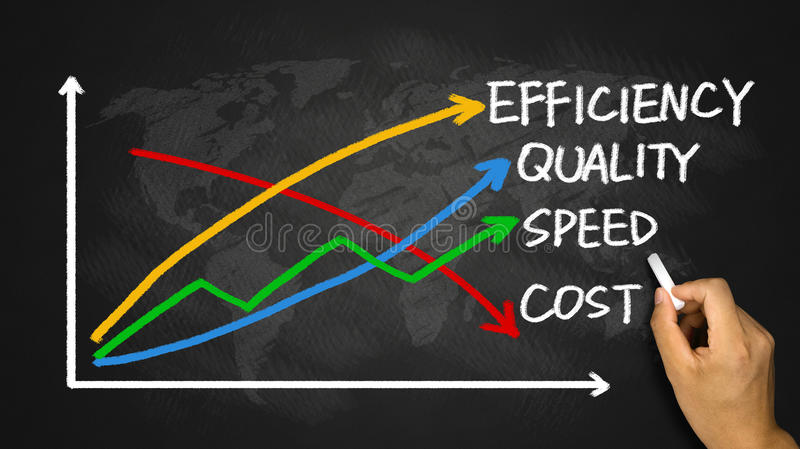“There are no solutions, there are only trade-offs.” ― Thomas Sowell
Introduction
When the alarm bell rings in the morning, either we wake up or we put the alarm on snooze. When we wake up, either we spend our fresh energy on social media like newspapers, Whatsapp, Facebook etc. or we can channel our energy through yoga, meditation, morning walk etc. When we take our breakfast, we can either eat healthy food or we can eat deep-fried pakoras or parathas. When we are going to the office on the crowded street and getting late, we can either scream/abuse others/ourselves or we can relax and enjoy soothing music. When we are in the office, we can either scream/shout/yell/crib or we can respond assertively/calmly/patiently. When we are back home, either we can binge-watch series on OTT/TV or we can spend time with ourselves/family/books and sleep on time. Everything is a trade-off; the choice is ours!
Read More: https://bit.ly/VAandVE
Content: Trade-off Curves / Opportunity Cost
- What are Trade-off Curves
- What is the Opportunity cost
- What are its Purpose and benefits
- How an organization can use them
- Conclusion
Read More: http://bit.ly/VideoAuditandInspection
Objective
Knowingly and unknowingly, we trade off the entire day. Whether it is finance, marketing, purchase, design, production or stores. The management is always looking at the opportunity cost while investing in a new project, acquiring a new customer, selecting/deleting a new supplier, designing a low-cost product/service, validating the process parameters or setting inventory norms. Every result is an outcome of the trade-off between what we can gain and what we may lose in the process.
Once you read this blog, you will understand, what is Trade-off Curves, What is Opportunity cost, What is the purpose of these curves and how organizations can get benefitted by using them effectively.
Read More: https://bit.ly/DifferenceOldNewFMEA
Definition: IATF 16949: 2016 (Cl 3.0)
Trade-off Curves: Tool to understand and communicate the relationship of various design characteristics of a product to each other; a product’s performance on one characteristic is mapped on the Y-axis and another on the X-axis. Then a curve is plotted to illustrate product performance relative to the two characteristics.
Trade-off Process: Methodology of developing and using trade-off curves for products and their performance characteristics that establish the customer, technical, and economic relationship between design alternatives
Design for Six Sigma (DFSS): Systematic methodology, tools and techniques with the aim of being a robust design of products or processes that meets customer expectations and can be produced at a six-sigma quality level
Design for Manufacturing (DFM): Integration of product design and process planning to design a product that is easily and economically manufactured
Design for Manufacturing and Assembly (DFMA): Combination of two methodologies: Design for Manufacture (DFM), which is the process of optimizing the design to be easier to produce, have higher throughput, and improved quality; and Design for Assembly (DFA), which is the optimization of the design to reduce risk of error, lowering costs, and making it easier to assemble
Read More: https://bit.ly/DiffVisionMission
Detailed Information
In economics, a very basic trade-off can be understood as the idea that if you choose one thing, you are going to lose another. The trade-off is taking the opportunity to have something, but to get that thing, you have to give up, or sacrifice, something else. When entering into these types of decisions, it is 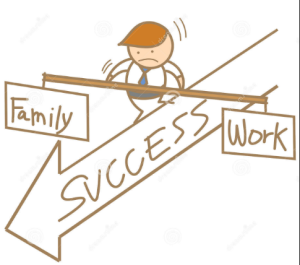 important to consider the opportunity cost, which is the benefit that is being lost from the thing that is being sacrificed. Because money, time, and energy are such valuable resources, it is important to understand what the opportunity costs are when deciding so that you can make the most beneficial trade-off for each particular situation.
important to consider the opportunity cost, which is the benefit that is being lost from the thing that is being sacrificed. Because money, time, and energy are such valuable resources, it is important to understand what the opportunity costs are when deciding so that you can make the most beneficial trade-off for each particular situation.
To survive and thrive in these challenging times, organizations can’t simply carry on developing, and manufacturing products in the same traditional way. They need to understand exactly where the unnecessary costs and wastages lie in their products & processes and eliminate/reduce them.
If implemented prudently (by focusing on 4M: Man, Machine, Material, Method), trade-offs can generate spectacular cost savings through smart material substitution and process optimization, making products more competitive and commercially attractive for the customer. The challenge for many organizations, though, is finding the intelligence so that opportunity cost can be identified and leveraged across the product life cycle.
Read More: https://bit.ly/JigsFixtures
What are Trade-off Curves?
Trade-off curves describe the limits of performance that are possible with a given design approach in a simple visual form. They typically characterize the relationship between two or more key parameters that relate design decision(s) to factor(s) that customers/organizations care about over a range of values.
Trade-off processes can be concerned with existing products/processes or new processes/products too. It involves an analysis of the product/process by a cross-functional team, to reduce costs, improve product function, alternative components and design aspects such as ease of manufacture and assembly.
 For Example, The Diameter and Wall Thickness of the pipe (design decisions) to fluid pressure and velocity (customer requirements).
For Example, The Diameter and Wall Thickness of the pipe (design decisions) to fluid pressure and velocity (customer requirements).
Michael Porter said, “The sign of a good strategy is that it makes some customers unhappy.”
Read More: http://bit.ly/SPCandMSA
What is Opportunity Cost?
Opportunity cost is the value of what you lose when choosing between two or more options. When you decide, you feel that the choice you’ve made will have better results for you regardless of what you lose by making it.
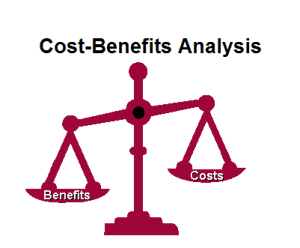 For Example, In an Electrical Vehicle (EV), the weight of the battery is very high. To compensate for the battery weight, the weight of other components in the vehicle needs to be rationalized so that the overall weight of the vehicle should not increase as it may impact the mileage and performance of other components like Tyres. So, the weight of other components like lights, sheet metal components, plastic components etc. is reduced without compromising on quality, reliability and durability.
For Example, In an Electrical Vehicle (EV), the weight of the battery is very high. To compensate for the battery weight, the weight of other components in the vehicle needs to be rationalized so that the overall weight of the vehicle should not increase as it may impact the mileage and performance of other components like Tyres. So, the weight of other components like lights, sheet metal components, plastic components etc. is reduced without compromising on quality, reliability and durability.
A classification between necessary and unnecessary functions is conducted based on function analysis. As a result, the business can achieve cost reduction by eliminating unnecessary functions that add to the cost but neither improve quality nor enhance customer satisfaction.
Read More: http://bit.ly/CommonSpecialCause
Why Do Trade-offs Arise?
Kenny Rogers said, “There is a trade-off; as you grow older, you gain wisdom but you lose spontaneity.”
Trade-offs arise for several reasons. Michael Porter highlights three.
- Product features may be incompatible. That is, the product that best meets one set of needs performs poorly in addressing others.
Example: Luxury brands like Mercedes, Louis Vuitton, and Rolex can not reduce the cost for mass consumption as it will destroy their brand image and value
- There may be trade-offs in the activities In other words, the configuration of activities that best delivers one kind of value cannot equally well deliver another.
 Example: The value proposition offered by Amazon for the existing products and Cars is quite different. If Amazon will use the same practices for selling cars too, it is not acceptable to the consumer!
Example: The value proposition offered by Amazon for the existing products and Cars is quite different. If Amazon will use the same practices for selling cars too, it is not acceptable to the consumer!
- Another source of trade-offs is inconsistencies in image or reputation.
Example: Facebook is primarily for the common man for fun, information sharing, finding old friends etc. but if Facebook tries to compete with LinkedIn, it may spoil its existing market!
What is the Meaning of Value, Function and Cost?
Making intelligent trade-offs is one of the most important and difficult challenges in decision-making. The more alternatives you’re considering and the more objectives you’re pursuing, the more trade-offs you’ll need to make. The sheer volume of trade-offs, though, is not what makes decision-making so hard. It’s the fact that each objective has its basis for comparison.
Example A: While planning to fly from New Delhi to New York, the simplest trade-off can be about the flight cost but it is not that simple. There are multiple other factors that come into the picture like flight time, arrival & departure time, safety record, on-time arrival, use of frequent flyer miles, the prestige of the airlines and it can go even longer!
Example B: Consider IKEA, the Swedish home furnishings giant. IKEA’s value proposition is to provide good design and function at a low price. Its target customer is what IKEA calls the person “with a thin wallet.” In choosing its particular kind of value and the activities needed to deliver it, IKEA has accepted a set of limits: it does not meet all the needs of all customers.
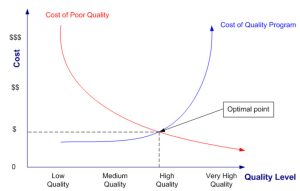 Value = What the product is worth to the customer
Value = What the product is worth to the customer
Function = Properties and qualities of the product
Cost= Cost of goods sold
Why it is Important?
Trade-offs are important because they help individuals, businesses, and governments make informed decisions about allocating their resources. By understanding trade-offs, individuals and organizations can make more efficient choices that align with their goals and priorities. Additionally, trade-offs help us understand the unintended consequences of our decisions, such as the opportunity cost of choosing one option over another.
First, let’s look at consumers. Consumers’ incomes are limited, yet they face limitless options for consumption. So, how do consumers use trade-offs to make the final choice? Consumers make the final choice by weighing the options and picking whichever one gives the highest benefit. In economics, it is assumed that consumers are logical and will pick the option with the highest benefit over the other options with fewer benefits.
Read More: http://bit.ly/VariableAttributeControlChart
Conclusion
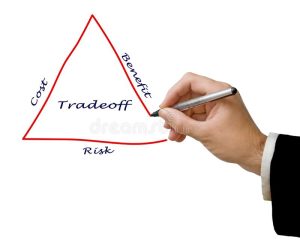 The concept of scarcity and getting the best in each situation give birth to the notion of trade-off and opportunity cost. These directly apply the principle of scarcity, as people have to decide, which one to choose among various alternatives while spending their time and money. The opportunity cost of choosing one project over the other, i.e., it is the alternative you must give up while making a choice. On the other hand, trade-off refers to all the other actions which we could be doing, apart from what we are doing.
The concept of scarcity and getting the best in each situation give birth to the notion of trade-off and opportunity cost. These directly apply the principle of scarcity, as people have to decide, which one to choose among various alternatives while spending their time and money. The opportunity cost of choosing one project over the other, i.e., it is the alternative you must give up while making a choice. On the other hand, trade-off refers to all the other actions which we could be doing, apart from what we are doing.
Read More: https://bit.ly/DifferenceCrandCSR
References:
ISO 9001: 2015
ISO 9002: 2016
ISO 9004: 2018
IATF 16949: 2016
Industry Experts
This is the 187th article of this Quality Management series. Every weekend, you will find useful information that will make your Management System journey Productive. Please share it with your colleagues too.
In the words of Albert Einstein, “The important thing is never to stop questioning.” I invite you to ask anything about the above subject. Questions and answers are the lifeblood of learning, and we are all learning. I will answer all questions to the best of my ability and promise to keep personal information confidential.
Your genuine feedback and response are extremely valuable. Please suggest topics for the coming weeks.
